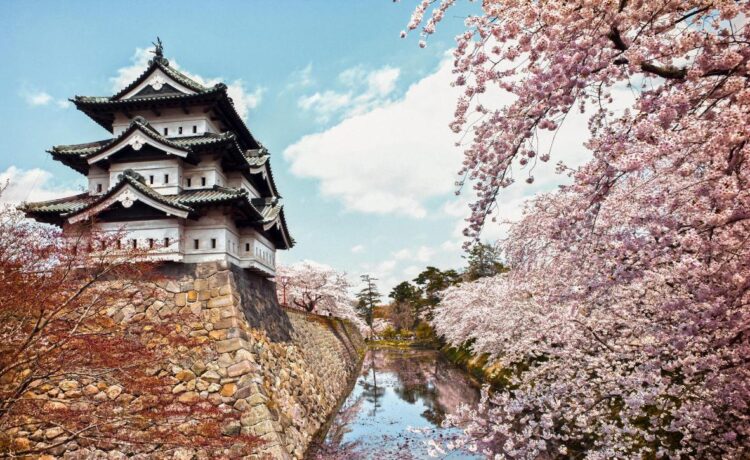Japanese flowering cherry trees, known as sakura in Japan, have a rich history and cultural significance. Originating from the mountainous regions of Japan, these trees have been cultivated for centuries and are celebrated annually during the cherry blossom festival, Hanami. This tradition has been embraced worldwide, symbolizing the beauty of nature and the transient nature of life.
In Britain, Japanese flowering cherry trees have become a beloved addition to many gardens, proof that many gardeners buy them from places such as https://www.chrisbowers.co.uk/category/japanese-flowering-cherries/, as they are admired for their spectacular spring blooms. The introduction of these trees to Britain dates back to the early 20th century, when they were brought over by plant collectors fascinated by their exquisite beauty. Since then, they have been cherished for their ornamental value and ability to thrive in the British climate.
The Appeal of Japanese Flowering Cherry Trees
The visual appeal of Japanese flowering cherry trees is unmatched. Their blossoms range in color from delicate whites and soft pinks to vibrant magentas, creating a stunning contrast against the green foliage and blue skies. The trees themselves have a graceful, arching form that adds an element of elegance to any garden.
One of the key attractions of these trees is their ability to produce a dramatic floral display in early spring. The blossoms typically last for one to two weeks, depending on weather conditions, providing a brief but breathtaking spectacle that heralds the arrival of warmer weather. This ephemeral beauty is part of what makes these trees so special and highly sought after by gardeners.
In addition to their aesthetic appeal, Japanese flowering cherry trees are also relatively easy to care for, making them an ideal choice for both novice and experienced gardeners. They are adaptable to a range of soil types and can thrive in various conditions, although they prefer well-drained soil and a sunny location. Once established, they require minimal maintenance, primarily consisting of occasional pruning to maintain their shape and health.
Ecological Benefits of Japanese Flowering Cherry Trees
Beyond their visual appeal, Japanese flowering cherry trees offer several ecological benefits that contribute to a healthier garden environment. These trees provide habitat and food for a variety of wildlife, including birds, bees, and butterflies. The blossoms attract pollinators, which play a crucial role in the health and productivity of the garden ecosystem.
The dense canopy of a mature cherry tree offers shelter and nesting sites for birds, while the fallen leaves and petals contribute to the organic matter in the soil, enriching it and supporting the growth of other plants. Additionally, the shade provided by the tree can help to cool the surrounding area, creating a more comfortable microclimate for other garden inhabitants.
Planting a Japanese flowering cherry tree can also contribute to air quality improvement. Trees, in general, absorb carbon dioxide and release oxygen, helping to mitigate the effects of air pollution. The presence of these trees in urban and suburban gardens can thus have a positive impact on the local environment.
Choosing the Right Variety
There are numerous varieties of Japanese flowering cherry trees to choose from, each with its own unique characteristics. When selecting a tree for your garden, it is important to consider factors such as the size of the mature tree, the color and timing of the blossoms, and the specific growing conditions in your area.
Some popular varieties include Prunus serrulata ‘Kanzan’, known for its large, double pink flowers, and Prunus x yedoensis ‘Somei-yoshino’, which produces delicate, single white blossoms. Other notable varieties are Prunus subhirtella ‘Autumnalis’, which can bloom sporadically in mild winters, and Prunus incisa ‘Kojo-no-mai’, a dwarf variety that is perfect for smaller gardens or container planting.
It is also important to consider the rootstock on which the tree is grafted, as this can affect the tree’s growth rate, size, and disease resistance. Consulting with a knowledgeable nursery expert can help you select the best variety and rootstock combination for your specific needs and garden conditions.
Planting and Caring for Your Tree
Planting a Japanese flowering cherry tree is relatively straightforward, but there are a few key steps to ensure its successful establishment. The best time to plant these trees is in the early spring or autumn when the soil is moist and the weather is mild. Choose a sunny location with well-drained soil, and dig a hole that is wide enough to accommodate the tree’s root ball.
Before planting, it is beneficial to add some organic matter, such as compost, to the soil to improve its fertility and structure. Place the tree in the hole, ensuring that the root collar is at ground level, and backfill with soil, gently firming it down to eliminate air pockets. Water the tree thoroughly after planting to help settle the soil and establish strong roots.
Japanese flowering cherry trees are simple maintenance once established. Early on in its life, the tree needs to be watered frequently to develop a deep root system. Weeds can be controlled and moisture retained by mulching the tree’s base. Dead or damaged branches should be removed and the tree should be shaped as desired by pruning in late winter or early spring.
It is also advisable to protect young trees from frost damage, particularly in colder regions of Britain. This can be done by wrapping the trunk in burlap or other protective material during the winter months.
Common Issues and How to Address Them
While Japanese flowering cherry trees are generally hardy and resilient, they can be susceptible to certain pests and diseases. One common issue is cherry leaf spot, a fungal disease that causes dark spots on the leaves and can lead to premature leaf drop. This can be managed by removing and destroying affected leaves and applying a fungicidal spray if necessary.
Another potential problem is aphid infestation, which can cause distorted leaves and reduce the tree’s vigor. Aphids can be controlled by introducing natural predators, such as ladybirds, or by using insecticidal soap. Regular monitoring and prompt action can help to keep these pests in check and maintain the health of your tree.
In some cases, Japanese flowering cherry trees may also be affected by bacterial canker, which causes sunken lesions on the branches and can lead to dieback. This disease is more common in wet conditions and can be managed by pruning out affected branches and applying a copper-based fungicide. Ensuring good air circulation around the tree and avoiding overhead watering can also help to prevent the spread of bacterial canker.
Enhancing Your Garden with Japanese Flowering Cherry Trees
In addition to their ecological and aesthetic benefits, Japanese flowering cherry trees can also play a key role in the overall design of your garden. Their elegant form and seasonal interest make them an ideal focal point or specimen tree in both formal and informal garden settings.
These trees can be used to create a sense of structure and continuity in the garden, linking different areas and providing a natural transition between spaces. Their blossoms can also be combined with other spring-flowering plants, such as daffodils and tulips, to create a stunning display of color and texture.
For those with smaller gardens or limited space, dwarf varieties of Japanese flowering cherry trees can be an excellent choice. These compact trees can be grown in containers or as part of a mixed border, adding a splash of color and interest without taking up too much room. They can also be trained as bonsai, providing a unique and artistic element to your garden or patio.
Conclusion: A Timeless Addition to Any Garden
Japanese flowering cherry trees are a timeless and versatile addition to any garden, offering a combination of beauty, ecological benefits, and low-maintenance care. With their stunning blossoms and graceful form, these trees can transform your garden into a serene and enchanting space.
By choosing the right variety and providing the appropriate care, you can enjoy the many benefits of Japanese flowering cherry trees for years to come. Whether you are a seasoned gardener or a beginner, these trees are a rewarding and delightful choice that will enhance your garden and bring a touch of Japanese elegance to your outdoor space.
With insights from a nursery expert, this article has aimed to provide a comprehensive guide to understanding, planting, and caring for Japanese flowering cherry trees. We hope that you are inspired to include these beautiful trees in your garden and experience the joy of their magnificent blooms each spring.
For further information on Japanese flowering cherry trees and how to incorporate them into your garden, explore the wealth of resources available online and consult with local garden centers or nurseries. Happy gardening!






